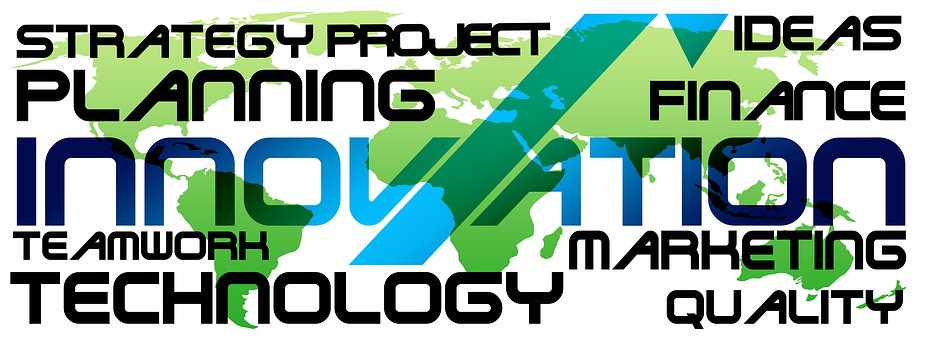If you’re hoping to introduce new products, there are many factors you must evaluate first – if you want to be profitable and experience growth.
Why? Your prospective customers will evaluate your offerings on several factors.
True, you can use formal research tools to get your answers, such as focus groups or prototype testing. But you’ll want to be certain to save time and money, right?
Be diligent in asking the right questions about your strengths, weaknesses, opportunities and threats in a SWOT analysis.
So start thinking about the relevant typical questions: Is it practical? What are the obstacles to success? What is needed to guarantee customer satisfaction? What are the unknown contingencies?
Especially, consider 10 factors:
1. Get financial traction
Poor financial planning and resulting poor cash flow are the biggest obstacles to success.
Strategic due diligence in financial planning is imperative for product traction.
2. Technology
Assess what you’ll need technology-wise for long-term success.
3. Assess personal, employee and company capabilities
Businesspeople who love what they do have greater odds for success. But that’s not enough to consider.
You should conduct a SWOT analysis of your strengths, weaknesses, opportunities and threats.
Why? You and your employees who engage customers will disproportionately determine your success.
Eighteen percent of customers will only buy at the cheapest price. So target the 82 percent who consider value.
The five value perceptions of what your customers sub-consciously think in motivating them to buy from you:
Employees, Spokespersons – 52 percent. The key characteristics are integrity, judgment, friendliness and knowledge. Remember, about 70 percent of your customers will buy elsewhere because they feel they’re being taken for granted by your employees. And customers normally will not tell you why they switched to your competitor.
Image of Company – 15 percent. They are concerned about the image of your company in the community. Cause-related marketing is a big plus in forging a positive image. So is cleanliness and good organization.
Quality of Product or Service Utility – 13 percent. The customer is asking the question – “What will this do for me?”
Convenience –12 percent. Customers like easy accessibility to do business with you. That includes your Web site, telephoning you, and the convenience of patronizing your business.
Price – 8 percent. Price is important, but it’s the least concern among the five value-motivating perceptions.
4. Fill a marketplace need
Make sure your products create a demand by adequately solving a need.
5. Competition
Competition is healthy. However, if your competitors have a head start and are already successfully selling products at Amazon, Costco, Overstock or WalMart, you perhaps face overwhelming odds.
So successfully differentiating in your marketing is vital.
6. Size and Weight
You’ll want a favorable size and weight for your products. They affect consumer acceptance and shipping costs.
E-commerce customers increasingly disdain paying for shipping. Many e-commerce businesses have suffered from shopping-cart abandonment for that very reason.
Paying for shipping will affect your profit margins.
7. Product durability
Not only are fragile products unpopular with customers, brittle products increase inventory costs and are high maintenance in packaging and shipping.
8. SKUs
Assess how many SKUs (stock keeping unit) you want to market. The SKU is determined by the color, size and variation of your products.
If you have too many or unnecessary SKUs, you’ll be saddled with extra time and sales-opportunity costs in keeping track of your inventory.
9. Product lifespan
If you sell perishable products, you can benefit more easily from repeat sales but it gets really tricky. If your churn rate is low, you won’t be successful.
You’ll have to overcome built-in barriers – in production, storage and shipping.
Take into account your ordering processes. And make sure your branding gives you a competitive edge.
10. Seasonality
Will your sales be affected by the seasons of the year? If so, you’ll have to concentrate on timely promotions, limited time offers and anticipating potential shipping obstacles.
From the Coach’s Corner, here are related sources of information:
To Realize Your Business Vision, 8 Best Practices for Setting Goals – Whatever your situation, to realize your vision, focusing on the right details is a skill conducive for strategically setting goals. Here are eight best practices.
For the Best Cash Flow, Manage Your Inventory Costs with 8 Tips – With proper inventory management, you can lower your expenses and increase your cash flow. For many businesses, that means taking a look at your inventory costs. When your products aren’t selling, obviously, it hurts. Products just lurking and collecting dust in your warehouse are costing you money. Your investment in such products declines in value.
Big Data, Though a Trite Term, Helps in 6 Types of Analytics – To understand, forecast, and improve business performance, you need to know how to use data in analytics. Based on the most-popular Biz Coach articles since 2009 and the myriad of issues that cause CEOs to sleep at night, it’s worth noting top-performing companies have six significant ways to make use of big data in analytics.
For Profits, Manage Your Growth at the Right Pace – Entrepreneurs frequently try to rush their business growth. Certainly, growth is great but if you scale too fast, you’re looking for trouble. The key is to prepare.
Your Supply Chain Can Meet the Expected Standards of Customers, If…— A company that fails to meet customer expectations on store inventory and delivery has problems in supply chain management. Such a company minimizes its profits. Worse, it’s a red flag about competitiveness and long-term sustainability.






